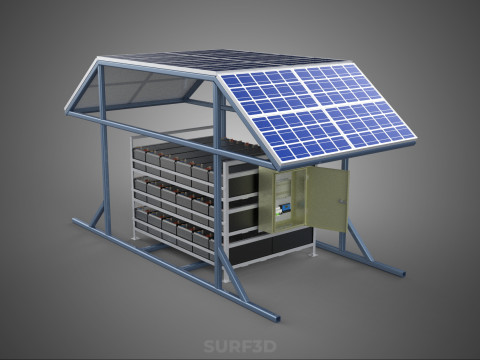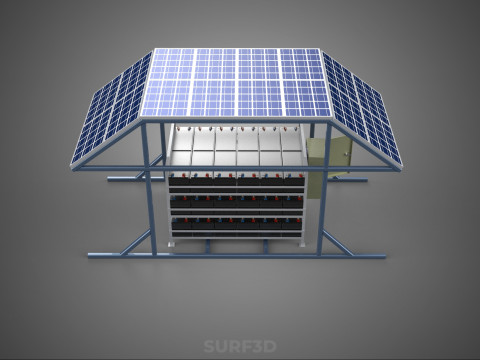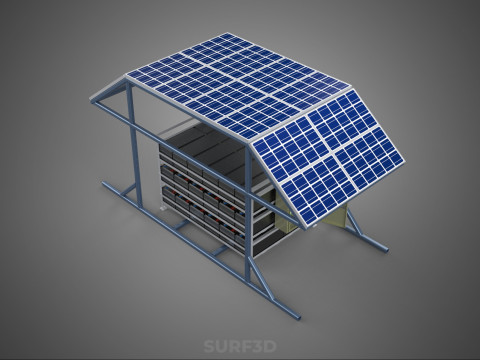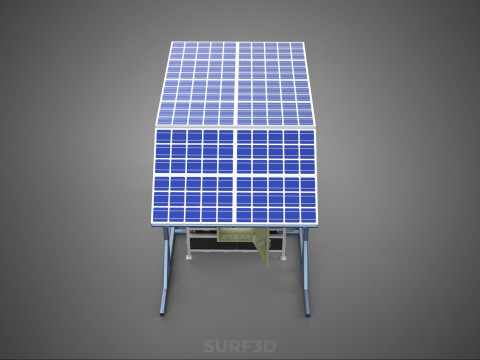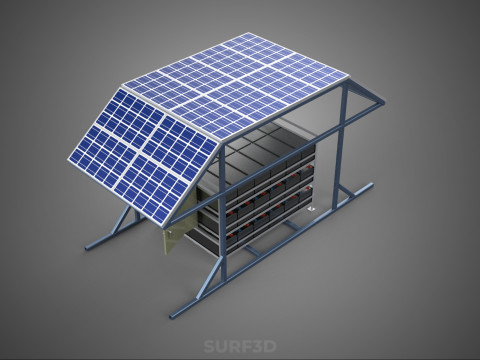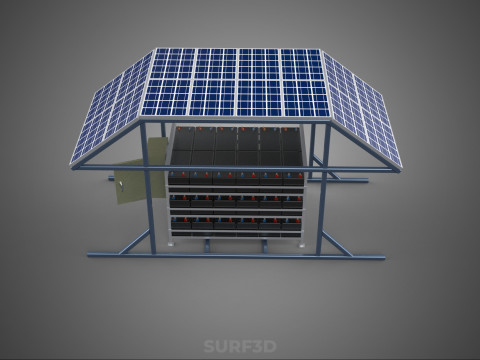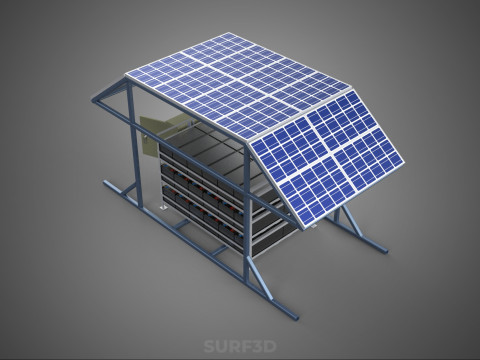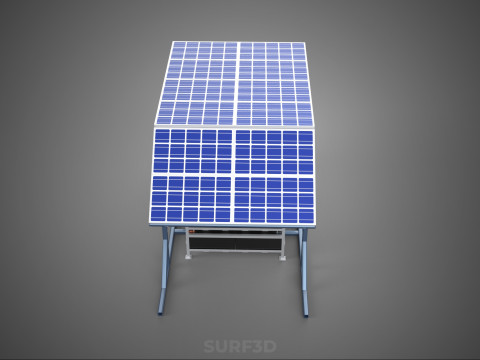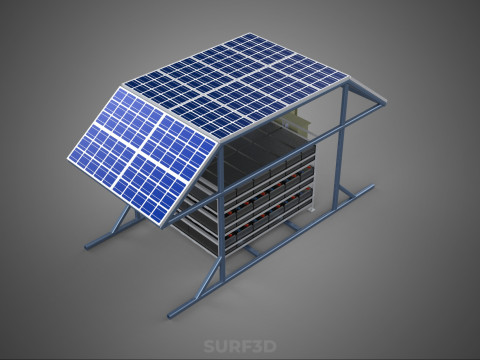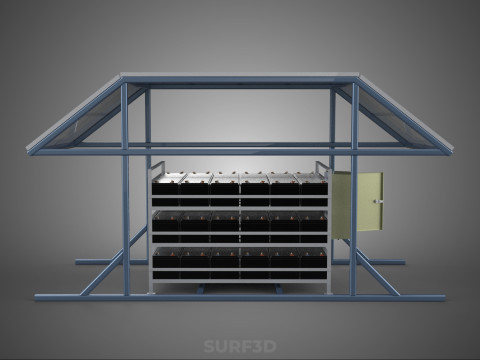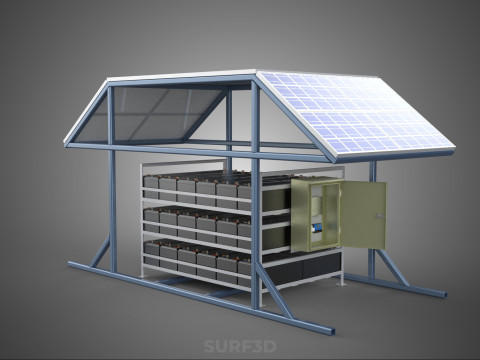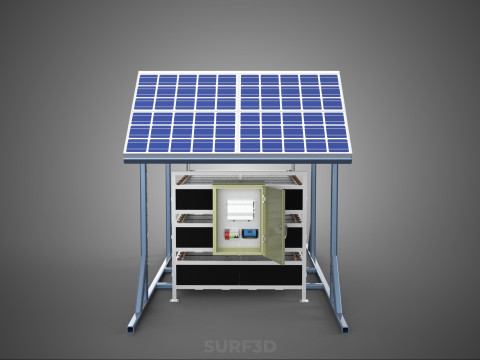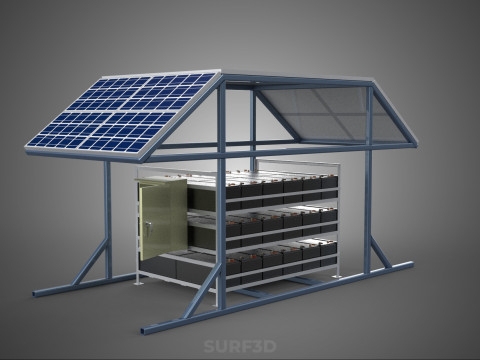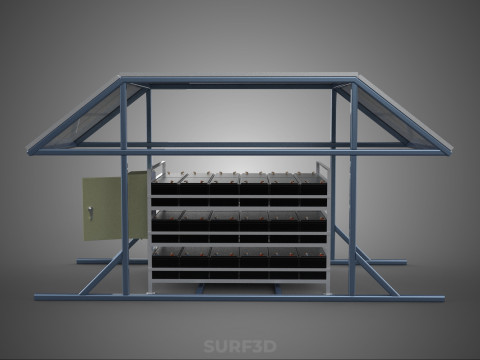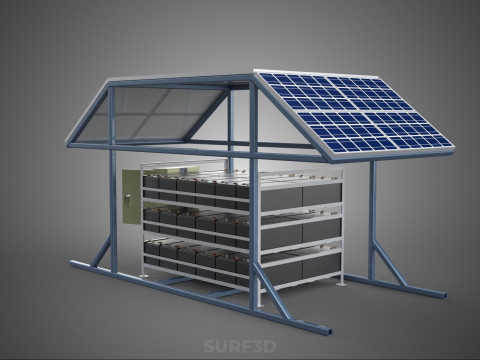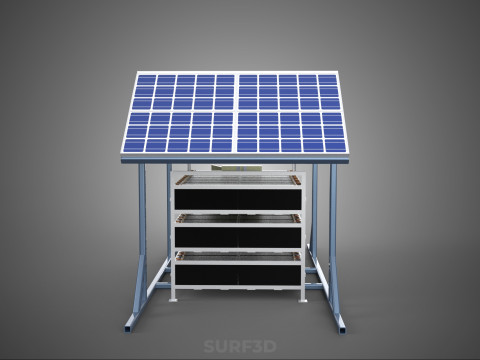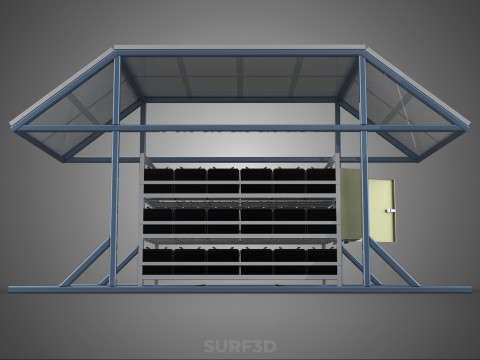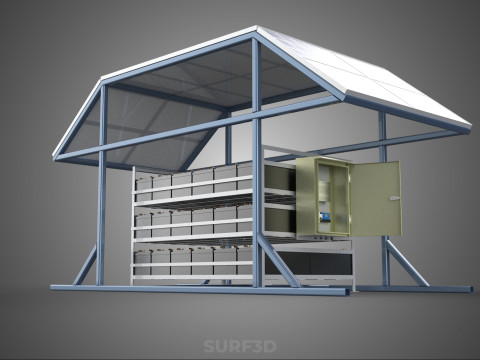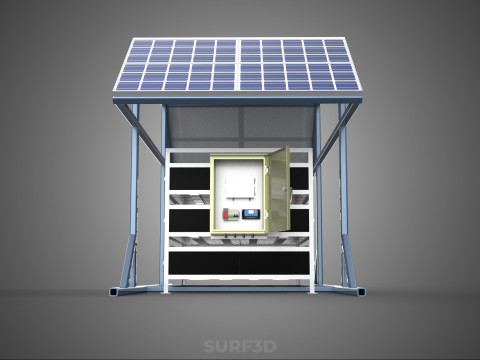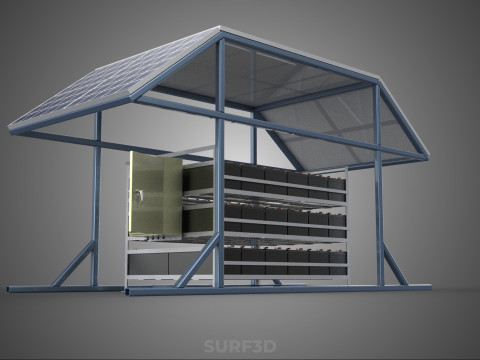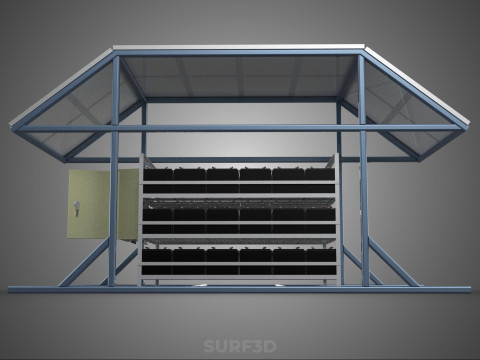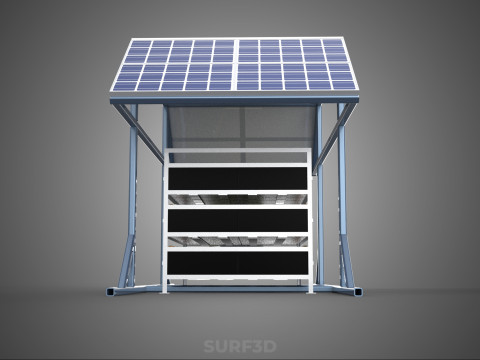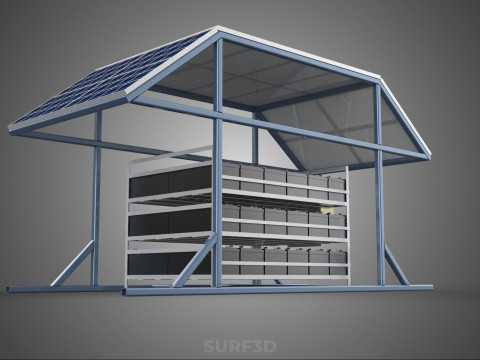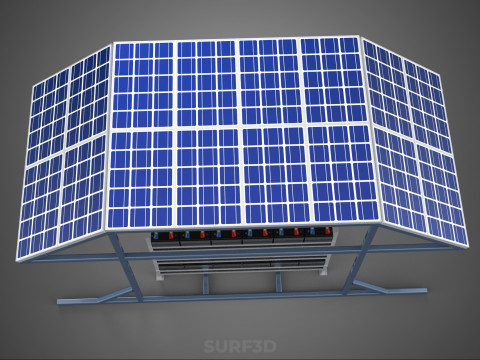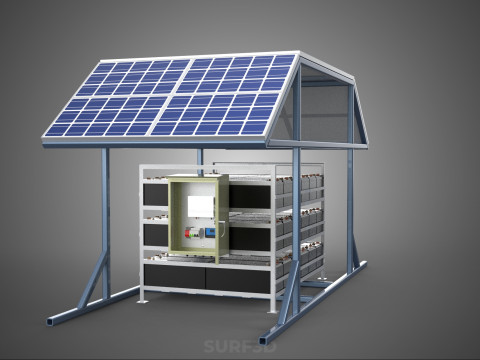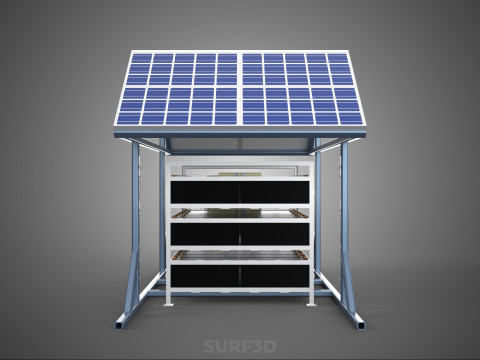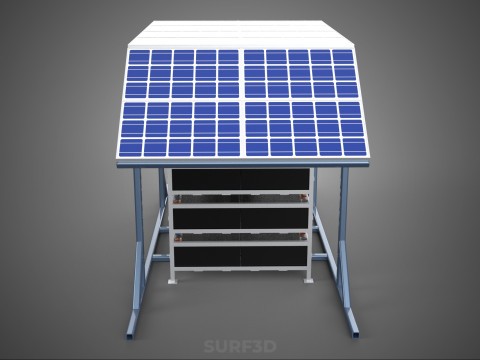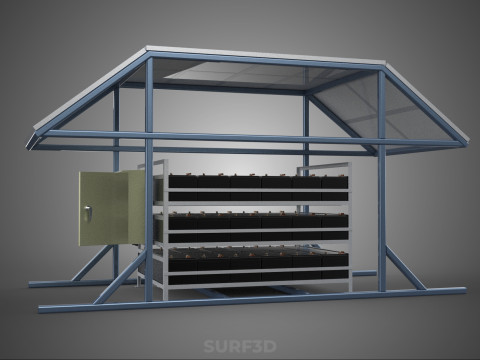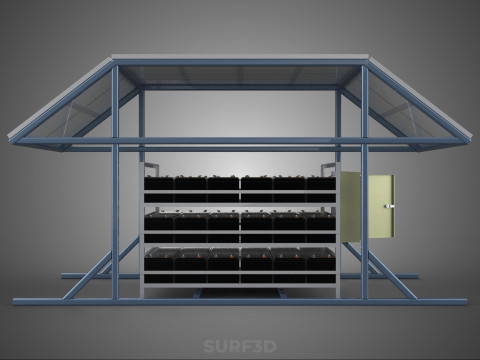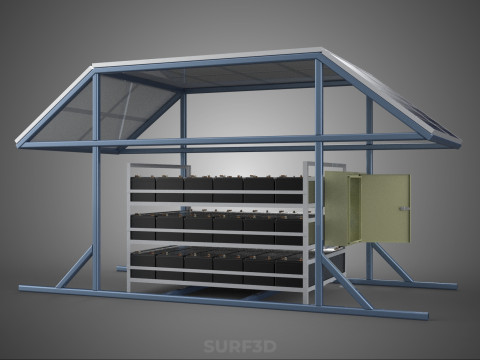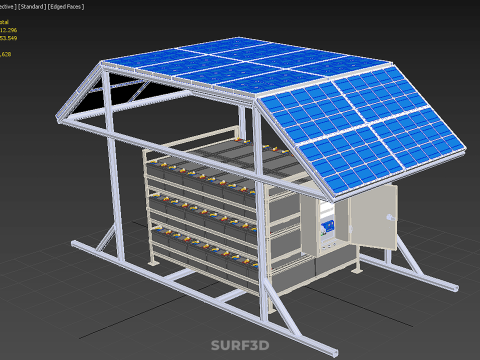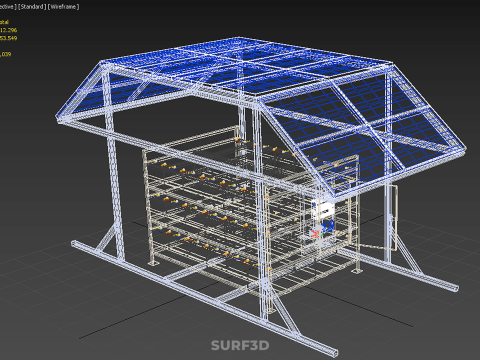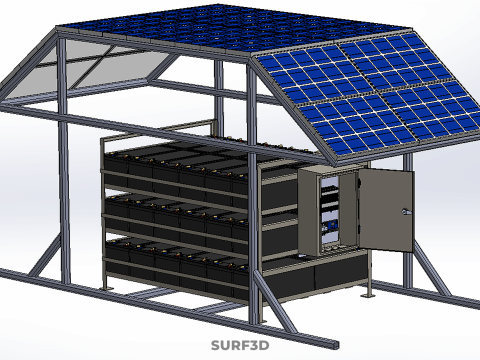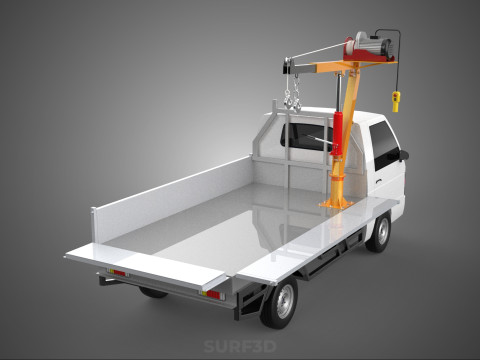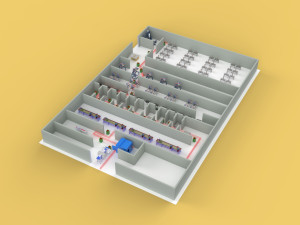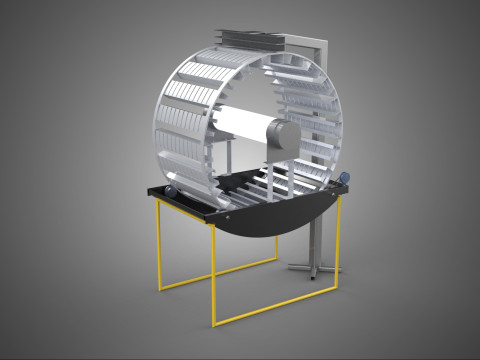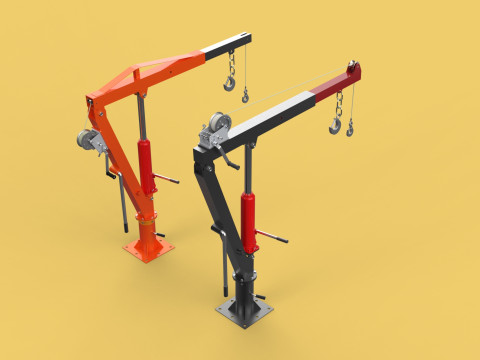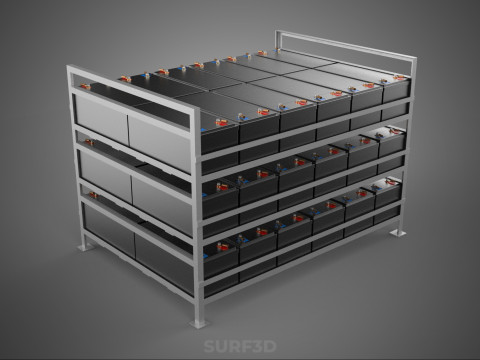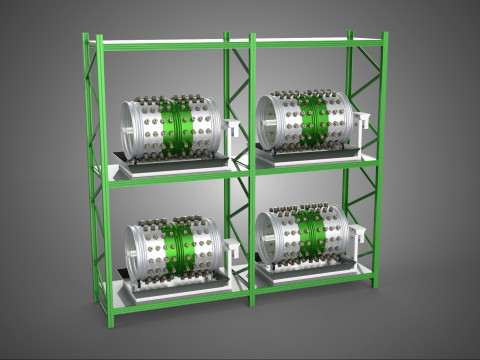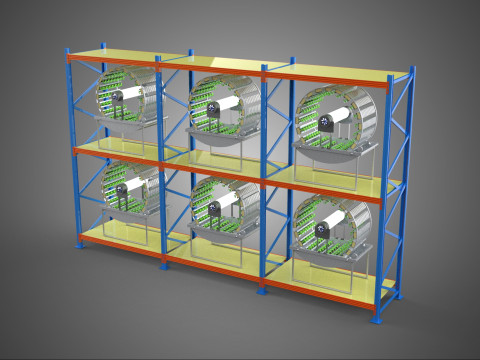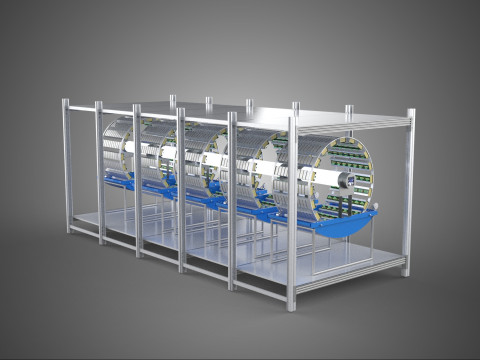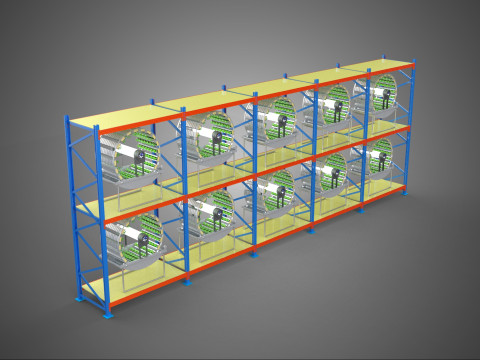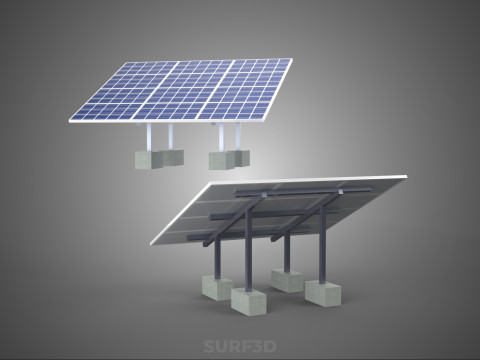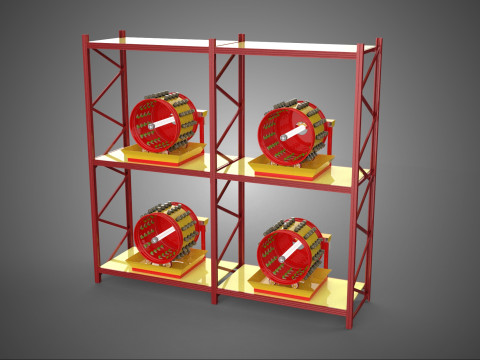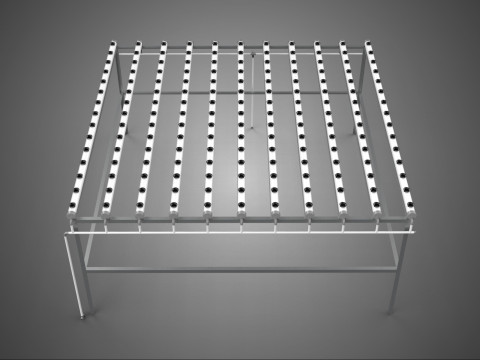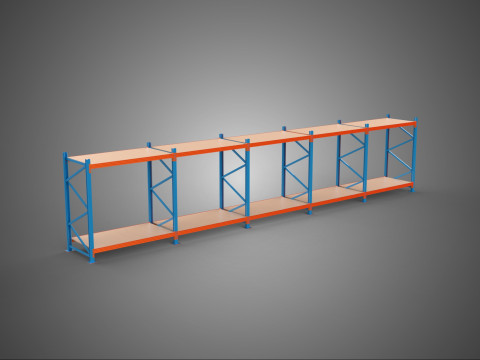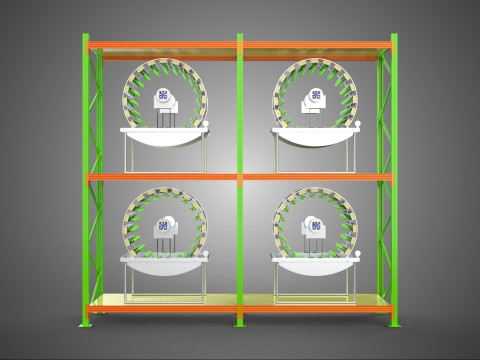ENERGIE-KRACHTCENTRALE ZONNEPANEEL PV ARRAY RACK BATTERIJBANKPAKKET 3D Model
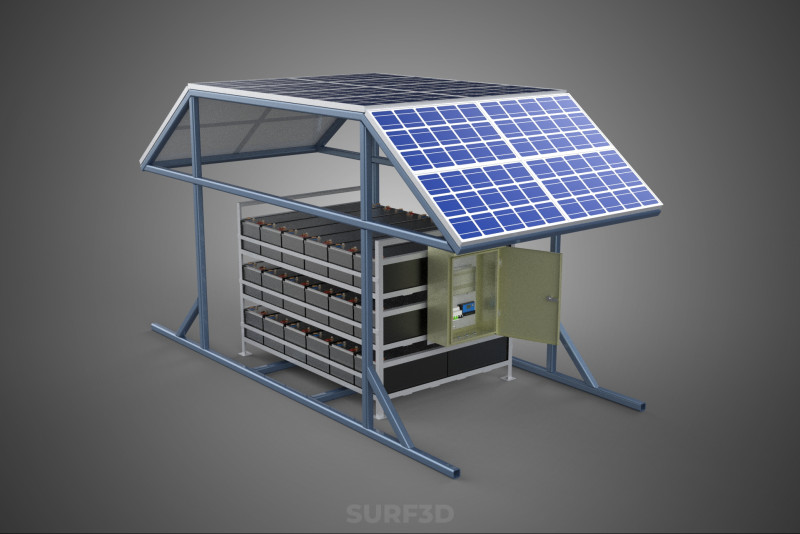
- Vraag productondersteuning
- Mogelijke formaten:
- Item ID:596781
- Datum: 2025-09-04
- Polygonen:612296
- Hoekpunten:553549
- Geanimeerd:No
- Texturen:No
- Gemanipuleerd:No
- Materialen:
- Low-poly:No
- Collectie:No
- UVW-toewijzing:No
- Plugins Gebruikt:No
- Afdruk Gereed:No
- 3D scan:No
- Volwassen:No
- PBR:No
- AI-training:No
- Geometrie:Poly NURBS
- Onverpakte UV's:Unknown
- Aantal keer bekeken:207
Beschrijving
High-quality 3D assets at affordable prices — trusted by designers, engineers, and creators worldwide. Made with care to be versatile, accessible, and ready for your pipeline.
Included File Formats
This model is provided in 14 widely supported formats, ensuring maximum compatibility:
• - FBX (.fbx) – Standard format for most 3D software and pipelines
• - OBJ + MTL (.obj, .mtl) – Wavefront format, widely used and compatible
• - STL (.stl) – Exported mesh geometry; may be suitable for 3D printing with adjustments
• - STEP (.step, .stp) – CAD format using NURBS surfaces
• - IGES (.iges, .igs) – Common format for CAD/CAM and engineering workflows (NURBS)
• - SAT (.sat) – ACIS solid model format (NURBS)
• - DAE (.dae) – Collada format for 3D applications and animations
• - glTF (.glb) – Modern, lightweight format for web, AR, and real-time engines
• - 3DS (.3ds) – Legacy format with broad software support
• - 3ds Max (.max) – Provided for 3ds Max users
• - Blender (.blend) – Provided for Blender users
• - SketchUp (.skp) – Compatible with all SketchUp versions
• - AutoCAD (.dwg) – Suitable for technical and architectural workflows
• - Rhino (.3dm) – Provided for Rhino users
Model Info
• - All files are checked and tested for integrity and correct content
• - Geometry uses real-world scale; model resolution varies depending on the product (high or low poly)
• • - Scene setup and mesh structure may vary depending on model complexity
• - Rendered using Luxion KeyShot
• - Affordable price with professional detailing
Buy with confidence. Quality and compatibility guaranteed.
If you have any questions about the file formats, feel free to send us a message — we're happy to assist you!
Sincerely,
SURF3D
Trusted source for professional and affordable 3D models.
More Information About 3D Model :
An **Energy Power Station** predicated on **Solar Panel PV Array Rack Battery Bank Pack** technology represents a comprehensive photovoltaic (PV) system designed for the generation, conversion, and storage of electrical energy derived from solar radiation. This integrated infrastructure is a cornerstone of contemporary renewable energy initiatives, offering scalable solutions for both grid-**** and off-grid applications.
At its operational foundation, the system utilizes **Solar Panels**, also known as photovoltaic modules. These devices are meticulously engineered assemblies of multiple interconnected photovoltaic cells, typically fabricated from semiconductor materials, most commonly crystalline silicon. When incident sunlight, composed of photons, strikes these PV cells, the photovoltaic effect occurs, inducing the generation of a direct current (DC) electricity. The overall efficiency of these panels directly influences the rate at which solar energy is converted into usable electrical power.
Multiple individual solar panels are electrically interconnected and grouped together to form a **PV Array**. The configuration of panels within an array – typically connected in series to increase voltage and in parallel to increase current – is precisely engineered to achieve the desired aggregate power output and voltage level required for the specific application. These arrays collectively function as the primary energy collection units of the solar power station.
The physical support and structural integrity for these PV arrays are provided by a robust **Rack** system. Racking systems are engineered structures, frequently constructed from durable materials such as aluminum or galvanized steel, designed to securely mount solar panels and withstand diverse environmental stressors, including wind loads, snow loads, and seismic activity. These systems are precisely designed to orient the panels at an optimal tilt angle and azimuth (directional alignment) to maximize solar insolation capture throughout varying times of day and seasonal cycles. Common racking configurations include fixed-tilt ground-mounted, roof-mounted, and advanced single or dual-axis tracking systems that dynamically adjust panel orientation to follow the sun's trajectory.
To mitigate the inherent intermittency of solar energy generation – a factor influenced by nightfall, cloud cover, or seasonal variations – the system integrates a **Battery Bank**, often referred to as a **Battery Pack**. This critical component serves as an essential energy storage solution, accumulating surplus electricity generated during periods of high solar insolation and discharging it during times of low or no generation, or during peak electricity demand periods. A battery bank typically comprises multiple individual battery cells or modules connected in series and/or parallel to achieve the requisite voltage and ampere-hour (Ah) capacity. Common battery chemistries employed in these systems include lead-acid (e.g., flooded, sealed gel, absorbed glass mat - AGM), lithium-ion (Li-ion), and, increasingly, advanced technologies such as flow batteries, each offering distinct advantages concerning cycle life, energy density, and economic viability.
Beyond these primary components, a comprehensive solar power station incorporating a battery bank includes several essential ancillary systems. An **inverter** is indispensable for converting the DC electricity generated by the PV array and stored in the battery bank into alternating current (AC), which is the standard form of electricity suitable for most household appliances, industrial loads, and for injection into the utility grid. A **charge controller** actively regulates the voltage and current flowing from the PV array to the battery bank, preventing detrimental overcharging and deep discharging, thereby significantly extending the lifespan of the batteries. Comprehensive electrical wiring, protective devices (such as fuses and circuit breakers), and sophisticated monitoring systems are also integral to ensuring the safe, efficient, and reliable operation of the entire integrated system.
In summary, an Energy Power Station incorporating a Solar Panel PV Array Rack Battery Bank Pack represents a sophisticated and fully integrated system for sustainable electricity generation and storage. Its inherent modular nature allows for extensive scalability, making it suitable for a diverse range of applications, from distributed residential rooftop installations to large-scale utility-grade power plants. Such systems contribute significantly to global decarbonization efforts, enhance energy resilience, and foster greater energy independence.
KEYWORDS: Solar Energy, Photovoltaic, PV System, Solar Panel, PV Module, Solar Array, Racking System, Mounting Structure, Battery Storage, Energy Storage System, Battery Bank, Lithium-ion Battery, Lead-acid Battery, Charge Controller, Inverter, Grid-****, Off-grid, Renewable Energy, Sustainable Power, Energy Independence, Direct Current, Alternating Current, Solar Power Plant, Energy Generation, Energy Management, Electrical Grid, Decarbonization, Microgrid, Solar Farm, Photovoltaic Effect
Meer formaten nodig?
Als u een ander formaat nodig heeft, open dan alstublieft een nieuwe Support Ticket en vraag om een ander formaat. Wij kunnen uw 3D modelen van vorm veranderen naar: .stl, .c4d, .obj, .fbx, .ma/.mb, .3ds, .3dm, .dxf/.dwg, .max. .blend, .skp, .glb. Gratis formaatconversieWe converteren geen 3D scènes en formaten zoals .step, .iges, .stp, .sldprt.!
Gebruiksinformatie
ENERGIE-KRACHTCENTRALE ZONNEPANEEL PV ARRAY RACK BATTERIJBANKPAKKET - U kunt dit royaltyvrije 3D model gebruiken voor zowel persoonlijke als commerciële doeleinden, in overeenstemming met de Basislicentie of Uitgebreide Licentie.De Basislicentie dekt de meeste standaard use cases, waaronder digitale advertenties, ontwerp- en visualisatieprojecten, zakelijke socialmedia-accounts, native apps, webapps, videogames en fysieke of digitale eindproducten (zowel gratis als verkocht).
De Uitgebreide Licentie omvat alle rechten die worden verleend onder de Basislicentie, zonder gebruiksbeperkingen, en staat toe dat het 3D model wordt gebruikt in onbeperkte commerciële projecten onder royaltyvrije voorwaarden.
Lees meer
Hebben jullie een geld terug garantie?
Ja, dat hebben we. Als u een product heeft gekocht en u een fout gevonden heeft in de beschrijving of in het product zelf, zullen wij het probleem zo snel mogelijk oplossen. Als wij het probleem niet kunnen oplossen, zullen wij uw bestelling annuleren en krijgt u uw geld terug binnen 24 na downloaden van het product. Lees more benodigdheden hierKeyworden
- powerbank
- buiten het raster
- fotovoltaïsch
- extensive
- kastje
- microgrid
- beheer
- lifepo4
- opslag
- back up
- accumulator
- ups
- oplaadbaar
- zonnepaneel
- deep cycle battery
- voertuig
- oplader
- spanning
- kader


 English
English Español
Español Deutsch
Deutsch 日本語
日本語 Polska
Polska Français
Français 中國
中國 한국의
한국의 Українська
Українська Italiano
Italiano Nederlands
Nederlands Türkçe
Türkçe Português
Português Bahasa Indonesia
Bahasa Indonesia Русский
Русский हिंदी
हिंदी